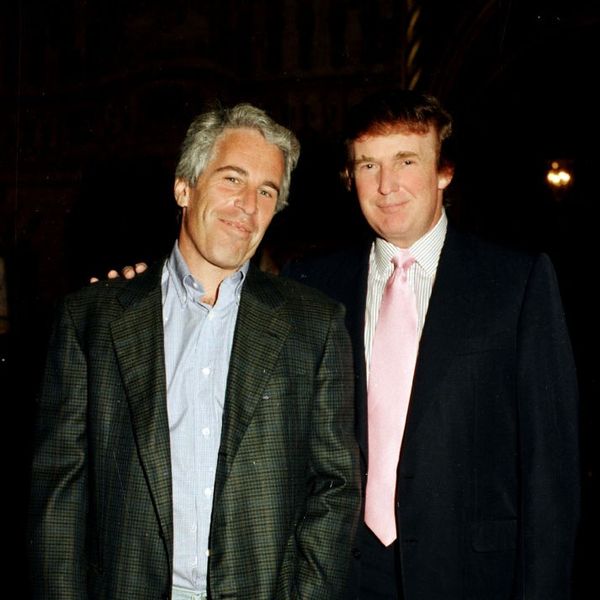Indigenous Protesters Take Aim at World Cup 'Injustice' with Bows and Arrows
Clashes with riot police outside stadium in Brazilia just weeks ahead of world's largest sporting event
Indigenous protesters clashed with riot police on horseback in Brazil's capital city of Brasilia on Tuesday as they tried to march the city's main soccer stadium which will soon play host to the World Cup.
Opposed to how preparations for the upcoming World Cup have displaced people from their homes and what they see as the government's lavish spending of vast sums of public money that could be used for better purposes, indigenous demonstrators joined those defending the rights of the homeless--some displaying bow and arrows and traditional dress--as they marched towards the Mane Garrincha National Stadium, the most costly of new venues built for the international soccer event that begins next month.
"Who is the Cup for? Not us!" the demonstrators shouted. "I don't want the Cup, I want money for health and education."
According to Agence France-Presse:
About 1,000 protesters rallying for causes ranging from indigenous rights to housing for the homeless gathered in Brasilia's government square and began marching toward the city's World Cup stadium.
After police fired tear gas, some Indians could be seen throwing stones at some of the 500 police encircling the stadium.
Protesters also continued to block roads around the government plaza, where the congress, presidential palace and Supreme Court are located.
Earlier, about 500 Indian leaders scaled the congress building and installed themselves on the roof, wearing traditional face paint and feathers and carrying bows and arrows, in a protest they said was aimed at protecting their rights.
The group, which brought together 100 ethnic groups from across Brazil, included Kayapo chief Raoni, an 84-year-old leader famous for fighting to protect the Amazon rainforest alongside pop music star Sting.
"Scaling the congress building was an act of bravery, it shows we're warriors who defend our rights," Tamalui Kuikuru, an indigenous leader from the Xingu region in Mato Grosso state, told AFP.
And Reuters adds:
Brasilia's stadium will cost 1.9 billion reais ($849.26 million) when the surrounding landscaping is finished after the World Cup, city auditors said in a report published last week, almost three times the price tag first budgeted.
Though they have not previously joined anti-World Cup protests, Indians have routinely protested in Brasilia against efforts to change the rules around how Indian reservations boundaries are determined. They invaded Congress while it was in session on several occasions last year.
Brazil's President Dilma Rousseff has promised the Homeless Worker's movement that squatters who have gathered around some of the stadiums will receive low-cost government housing. But her government has warned that it will call in troops if necessary to prevent protests disrupting the soccer games.
In photos:
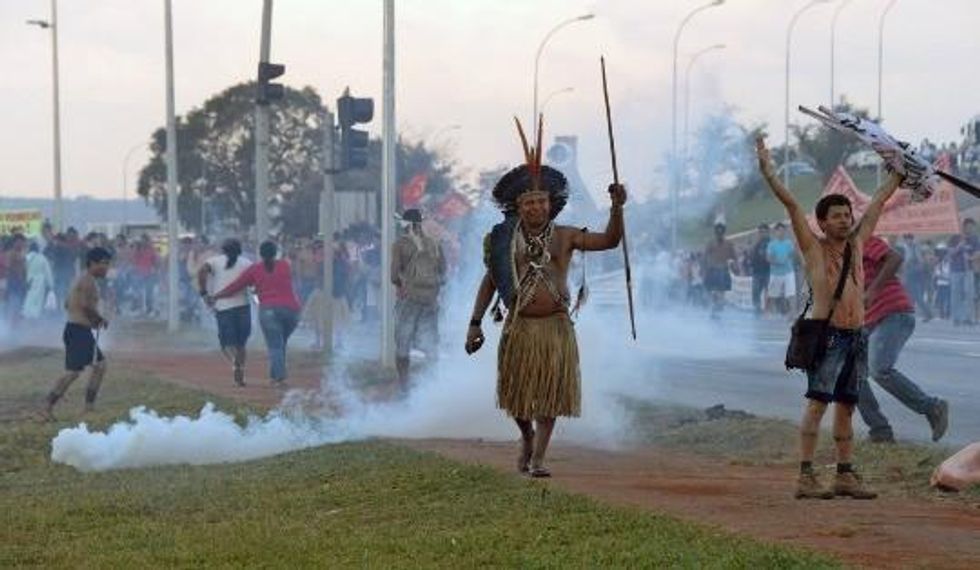
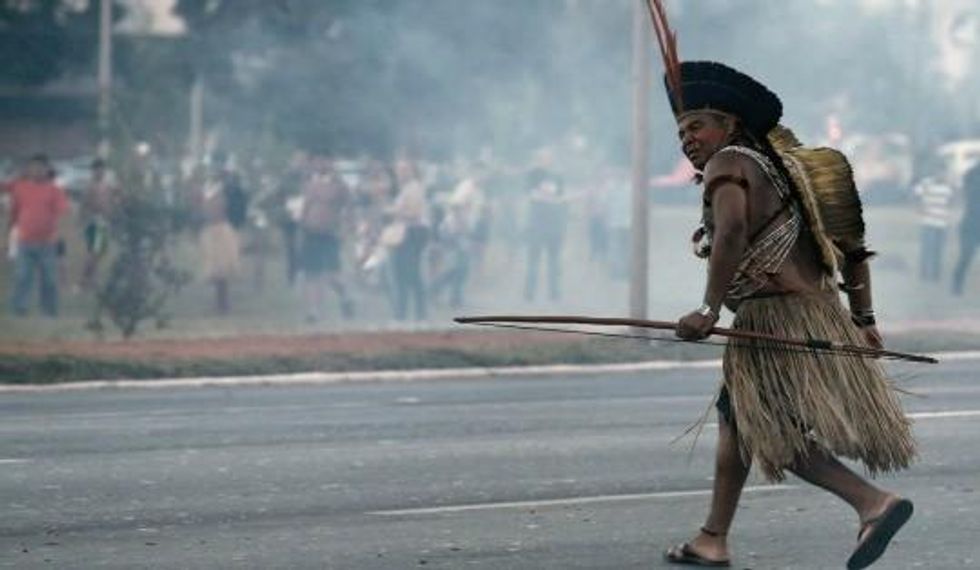
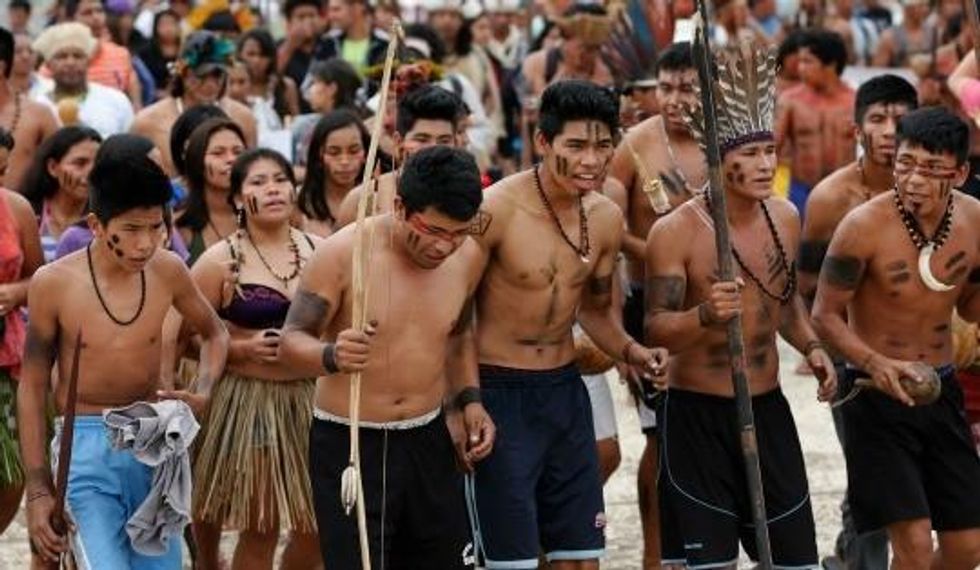

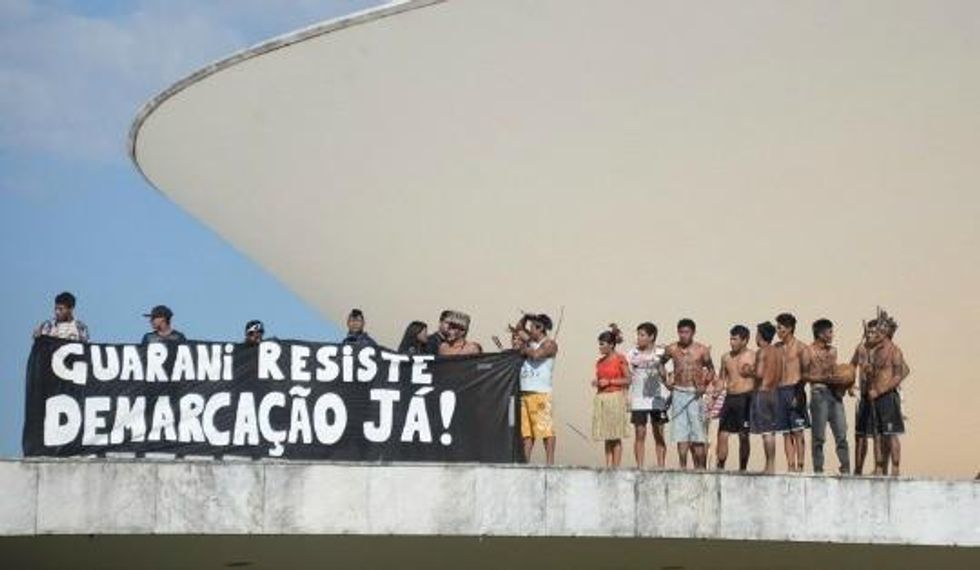
_______________________________________
An Urgent Message From Our Co-Founder
Dear Common Dreams reader, The U.S. is on a fast track to authoritarianism like nothing I've ever seen. Meanwhile, corporate news outlets are utterly capitulating to Trump, twisting their coverage to avoid drawing his ire while lining up to stuff cash in his pockets. That's why I believe that Common Dreams is doing the best and most consequential reporting that we've ever done. Our small but mighty team is a progressive reporting powerhouse, covering the news every day that the corporate media never will. Our mission has always been simple: To inform. To inspire. And to ignite change for the common good. Now here's the key piece that I want all our readers to understand: None of this would be possible without your financial support. That's not just some fundraising cliche. It's the absolute and literal truth. We don't accept corporate advertising and never will. We don't have a paywall because we don't think people should be blocked from critical news based on their ability to pay. Everything we do is funded by the donations of readers like you. Will you donate now to help power the nonprofit, independent reporting of Common Dreams? Thank you for being a vital member of our community. Together, we can keep independent journalism alive when it’s needed most. - Craig Brown, Co-founder |
Indigenous protesters clashed with riot police on horseback in Brazil's capital city of Brasilia on Tuesday as they tried to march the city's main soccer stadium which will soon play host to the World Cup.
Opposed to how preparations for the upcoming World Cup have displaced people from their homes and what they see as the government's lavish spending of vast sums of public money that could be used for better purposes, indigenous demonstrators joined those defending the rights of the homeless--some displaying bow and arrows and traditional dress--as they marched towards the Mane Garrincha National Stadium, the most costly of new venues built for the international soccer event that begins next month.
"Who is the Cup for? Not us!" the demonstrators shouted. "I don't want the Cup, I want money for health and education."
According to Agence France-Presse:
About 1,000 protesters rallying for causes ranging from indigenous rights to housing for the homeless gathered in Brasilia's government square and began marching toward the city's World Cup stadium.
After police fired tear gas, some Indians could be seen throwing stones at some of the 500 police encircling the stadium.
Protesters also continued to block roads around the government plaza, where the congress, presidential palace and Supreme Court are located.
Earlier, about 500 Indian leaders scaled the congress building and installed themselves on the roof, wearing traditional face paint and feathers and carrying bows and arrows, in a protest they said was aimed at protecting their rights.
The group, which brought together 100 ethnic groups from across Brazil, included Kayapo chief Raoni, an 84-year-old leader famous for fighting to protect the Amazon rainforest alongside pop music star Sting.
"Scaling the congress building was an act of bravery, it shows we're warriors who defend our rights," Tamalui Kuikuru, an indigenous leader from the Xingu region in Mato Grosso state, told AFP.
And Reuters adds:
Brasilia's stadium will cost 1.9 billion reais ($849.26 million) when the surrounding landscaping is finished after the World Cup, city auditors said in a report published last week, almost three times the price tag first budgeted.
Though they have not previously joined anti-World Cup protests, Indians have routinely protested in Brasilia against efforts to change the rules around how Indian reservations boundaries are determined. They invaded Congress while it was in session on several occasions last year.
Brazil's President Dilma Rousseff has promised the Homeless Worker's movement that squatters who have gathered around some of the stadiums will receive low-cost government housing. But her government has warned that it will call in troops if necessary to prevent protests disrupting the soccer games.
In photos:





_______________________________________
Indigenous protesters clashed with riot police on horseback in Brazil's capital city of Brasilia on Tuesday as they tried to march the city's main soccer stadium which will soon play host to the World Cup.
Opposed to how preparations for the upcoming World Cup have displaced people from their homes and what they see as the government's lavish spending of vast sums of public money that could be used for better purposes, indigenous demonstrators joined those defending the rights of the homeless--some displaying bow and arrows and traditional dress--as they marched towards the Mane Garrincha National Stadium, the most costly of new venues built for the international soccer event that begins next month.
"Who is the Cup for? Not us!" the demonstrators shouted. "I don't want the Cup, I want money for health and education."
According to Agence France-Presse:
About 1,000 protesters rallying for causes ranging from indigenous rights to housing for the homeless gathered in Brasilia's government square and began marching toward the city's World Cup stadium.
After police fired tear gas, some Indians could be seen throwing stones at some of the 500 police encircling the stadium.
Protesters also continued to block roads around the government plaza, where the congress, presidential palace and Supreme Court are located.
Earlier, about 500 Indian leaders scaled the congress building and installed themselves on the roof, wearing traditional face paint and feathers and carrying bows and arrows, in a protest they said was aimed at protecting their rights.
The group, which brought together 100 ethnic groups from across Brazil, included Kayapo chief Raoni, an 84-year-old leader famous for fighting to protect the Amazon rainforest alongside pop music star Sting.
"Scaling the congress building was an act of bravery, it shows we're warriors who defend our rights," Tamalui Kuikuru, an indigenous leader from the Xingu region in Mato Grosso state, told AFP.
And Reuters adds:
Brasilia's stadium will cost 1.9 billion reais ($849.26 million) when the surrounding landscaping is finished after the World Cup, city auditors said in a report published last week, almost three times the price tag first budgeted.
Though they have not previously joined anti-World Cup protests, Indians have routinely protested in Brasilia against efforts to change the rules around how Indian reservations boundaries are determined. They invaded Congress while it was in session on several occasions last year.
Brazil's President Dilma Rousseff has promised the Homeless Worker's movement that squatters who have gathered around some of the stadiums will receive low-cost government housing. But her government has warned that it will call in troops if necessary to prevent protests disrupting the soccer games.
In photos:





_______________________________________

